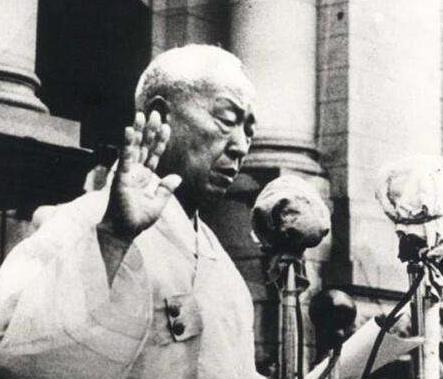By the time the War to Resist US Aggression and Aid Korea was in the first half of 1953, the Americans could not stand it, and in the past two years or so, they had spent tens of billions of dollars on the war and paid the price of more than 100,000 casualties, but victory was out of reach. At the same time, the anti-war calls in the United States are getting louder and louder, and conscription is becoming more and more difficult. In order to get out of the Korean battlefield as soon as possible, the Americans could not wait to start armistice negotiations with our army at Panmunjom.

However, the armistice negotiations were strongly opposed by Rhee, who told senior Rok military generals: "No matter what happens at Panmunjom, our goal remains the same, and our eternal goal is to unify Korea from the south to the Yalu River." You must continue to fight until you have achieved your goal." Syngman Rhee's attitude was so embarrassing to the U.S. government that Clark was ordered to visit Syngman Rhee on April 15 to persuade him to change his position, but was refused. Syngman Rhee told the commander-in-chief of the "UN forces": "You can withdraw all UN troops, withdraw all economic assistance. We will decide our own destiny, and we will not ask anyone to fight for us. The South Korean army will be out of the control of the United Nations army and fight alone! ”
Clark was hurt by Syngman Rhee's remarks, writing in his report to Washington: "Behind all the threats that Syngman Rhee said and didn't say, he just wanted us to be psychologically shocked." He knows that no matter what happens, after three years of war, especially after losing so much blood and wealth, we will not leave Korea alone because of the quarrels within the family and let it fall into the hands of the red elements. At the end of the report Clarke made this assessment of Syngman Rhee: "He is not reasonable at all, and he cannot come up with any reason, only he knows how far he will go, and has a tendency to act recklessly." ”
In order to prevent Rhee from making an unexpected move, with the approval of the Joint Meeting of Chiefs, Clark developed an action plan called "Always Ready". The American political commentator Goulden described the contents of the plan in detail in his book The Korean War: The Untold Truth. The plan envisages three emergencies: (1) the ROK military ignores unannounced instructions from U.N. forces; (2) south Korean forces acting alone; and (3) the most extreme scenario: South Korean troops and civilians are in "open hostility" with U.N. forces. In the first case, U.S. and U.N. forces would set out to defend vital areas around major cities; the Navy and Air Force would be put on alert; and intelligence activities against the South Korean military and government would increase. In the second case, some sort of "protective" withdrawal would be made to ensure the safety of the base; south Korean guard forces would be replaced by reliable United Nations forces; and civilian movements would be controlled. The third scenario requires the most extreme measures.
What is this extreme measure? In a May 27 telegram to the Joint Chiefs of Staff, Clark outlined that President Syngman Rhee would be invited to Seoul or elsewhere— any place that would allow him to leave Busan, South Korea's temporary capital. Un troops will march into the Busan area at the right time, arrest 5 to 10 senior South Korean officials who have served as leaders in Syngman Rhee's authoritarian operations, and take over the martial law through the Chief of the General Staff of the South Korean Army until it is lifted. If Rhee refuses to accept the UN armistice, "he will be placed in protective custody and in solitary confinement" the UN Command will set out to establish a government led by Prime Minister Jang Taek Sang; if Jang refuses, a junta under the leadership of the ROK army or directly under the UN army will be established.
On May 29, the "Always Ready" program was approved by Secretary of State Dulles and Secretary of Defense Charles Wilson. Later, Clark visited Syngman Rhee several times to persuade him. In the end, Syngman Rhee changed his position and informed Clark in writing on July 9 that although he could not sign the armistice agreement, "we will not obstruct it, as long as the measures and actions taken in the agreement do not harm the survival of our nation" and he will "cooperate wholeheartedly." On July 27, 1953, Clark signed the Armistice Agreement, which lasted nearly three years and ended with the victory of the Volunteer Army.